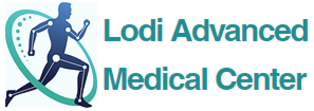Sciatica Treatment Lodi
Sciatica is a common condition that affects millions of people each year. It is characterized by pain that radiates from the lower back down the leg, and can be quite debilitating. While surgery is often recommended for severe cases, there are many nonsurgical therapy options available for those who suffer from sciatica. In this blog post, we will explore some of these options and how they can help to reduce pain and improve quality of life.
What is Sciatica?
Sciatica is a term used to describe pain that radiates along the sciatic nerve, which runs from the lower back through the buttocks and down each leg. It can be caused by a variety of conditions, including herniated discs, spinal stenosis, piriformis syndrome, and pregnancy. Symptoms may include sharp or burning pain in one or both legs, numbness or tingling in the legs or feet, and difficulty standing or walking.
Nonsurgical Therapy Options
There are several nonsurgical therapy options available for those who suffer from sciatica. These include physical therapy, chiropractic care, acupuncture, massage therapy, yoga and stretching exercises. Each of these therapies can help to reduce pain and improve mobility in those with sciatica.
Physical Therapy
Physical therapy is one of the most common treatments for sciatica. A physical therapist will work with you to develop an individualized treatment plan that includes stretching exercises to strengthen muscles in your back and legs as well as manual therapies such as massage and joint mobilization to reduce tension in your spine. Your therapist may also use heat or cold therapy to reduce inflammation in your spine and surrounding tissues.
Chiropractic Care
Chiropractic care focuses on restoring alignment to your spine through manual manipulation of your vertebrae. This can help to reduce pressure on nerves in your spine that may be causing sciatica symptoms such as pain or numbness in your legs. Your chiropractor may also recommend lifestyle changes such as posture correction exercises or ergonomic changes at work to help prevent future episodes of sciatica.
Acupuncture
Acupuncture involves inserting thin needles into specific points on the body known as “acupoints” which are thought to stimulate healing energy flow throughout the body. Studies have shown that acupuncture can be effective at reducing pain associated with sciatica as well as improving overall quality of life for those who suffer from it.
Massage Therapy
Massage therapy can help relax tense muscles which may be contributing to sciatica symptoms such as pain or numbness in your legs or feet. Your massage therapist may use techniques such as Swedish massage or trigger point release which involve applying pressure with their hands directly onto areas where you are experiencing tension or discomfort due to sciatica symptoms.
Yoga & Stretching Exercises
Regularly practicing yoga poses and stretching exercises can help improve flexibility in your spine which can reduce pressure on nerves that may be causing sciatica symptoms such as pain or numbness in your legs or feet. Additionally, yoga has been shown to reduce stress levels which can also contribute to reducing overall discomfort associated with sciatica symptoms.
Regenerative Medicine
Regenerative medicine which can include stem cell or platelet-rich plasma (PRP) injections have provided a promising therapy option for sciatica. Both stem cells and PRP injections use the body’s natural healing properties to repair damaged cells, restore function, and reduce pain.
These options may offer relief by reducing inflammation and accelerating the healing process. As a result, they are emerging as a preferred alternative to treatments like steroid injections, which can result in long-term side effects that include cartilage and nerve damage. These side effects can exacerbate sciatica symptoms. If you would like to learn more about the Nonsurgical therapy options for sciatica, contact Lodi today!
